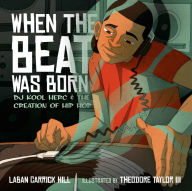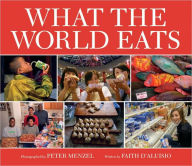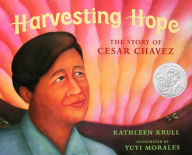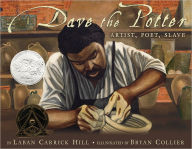Step back to an English village in 1255, where life plays out in dramatic vignettes illuminating twenty-two unforgettable characters. Winner of the Newbery Medal.
Maidens, monks, and millers’ sons — in these pages, readers will meet them all. There’s Hugo, the lord’s nephew, forced to prove his manhood by hunting a wild boar; sharp-tongued Nelly, who supports her family by selling live eels; and the peasant’s daughter, Mogg, who gets a clever lesson in how to save a cow from a greedy landlord. There’s also mud-slinging Barbary (and her noble victim); Jack, the compassionate half-wit; Alice, the singing shepherdess; and many more. With a deep appreciation for the period and a grand affection for both characters and audience, Laura Amy Schlitz creates twenty-two riveting portraits and linguistic gems equally suited to silent reading or performance. Illustrated with pen-and-ink drawings by Robert Byrd — inspired by the Munich-Nuremberg manuscript, an illuminated poem from thirteenth-century Germany — this witty, historically accurate, and utterly human collection forms an exquisite bridge to the people and places of medieval England.
Read More
John Schwartz
For the young people of Laura Amy Schlitz's new book, Good Masters! Sweet Ladies! Voices From a Medieval Village, life tends to be nasty, brutish and short. But young readers are also likely to find it engaging, affecting and occasionally giggle-worthy…Schlitz is a talented storyteller. Her language is forceful, and learning slips in on the sly.
—The New York Times
Publishers Weekly
Schlitz (The Hero Schliemann) wrote these 22 brief monologues to be performed by students at the school where she is a librarian; here, bolstered by lively asides and unobtrusive notes, and illuminated by Byrd's (Leonard, Beautiful Dreamer) stunningly atmospheric watercolors, they bring to life a prototypical English village in 1255. Adopting both prose and verse, the speakers, all young, range from the half-wit to the lord's daughter, who explains her privileged status as the will of God. The doctor's son shows off his skills ("Ordinary sores/ Will heal with comfrey, or the white of an egg,/ An eel skin takes the cramping from a leg"); a runaway villein (whose life belongs to the lord of his manor) hopes for freedom after a year and a day in the village, if only he can calculate the passage of time; an eel-catcher describes her rough infancy: her "starving poor [father] took me up to drown in a bucket of water." (He relents at the sight of her "wee fingers" grasping at the sides of the bucket.) Byrd, basing his work on a 13th-century German manuscript, supplies the first page of each speaker's text with a tone-on-tone patterned border overset with a square miniature. Larger watercolors, some with more intricate borders, accompany explanatory text for added verve. The artist does not channel a medieval style; rather, he mutes his palette and angles some lines to hint at the period, but his use of cross-hatching and his mostly realistic renderings specifically welcome a contemporary readership. Ages 10-up. (Aug.)Copyright 2007 Reed Business Information
Children's Literature - Debbie Levy
Good Readers! Sweet Librarians! This delightfully unusual collection of monologues, dialogues, and poems presents the voices of various inhabitants of an English village in 1255—but this description does not begin to convey the life, humor, empathy, and drama that imbue every page. Not so slowly, but oh so surely (and slyly), the characters—Thomas, the doctor's son; Mogg, the villein's daughter; Lowdy, the varlet's child; Nelly, the sniggler; and eighteen more—mesmerize the reader with their stories and observations. Even Schlitz's marginal notes, in which she explains unfamiliar words and imparts fascinating tidbits, are written with panache. (A varlet, by the way, means scoundrel today, but was a word used for a man who looked after animals in the Middle Ages; a sniggler is a person who fished for eels by dangling bait in their riverbank holes.) Schlitz packs more plot in these interconnected vignettes than can be found in many novels. Sometimes she does it with rhyme that is sophisticated yet accessible (Thomas the doctor's son begins, "My father is the noble lord's physician/And I am bound to carry on tradition"). Sometimes she does it in prose (Nelly the sniggler describes eels as "Fresher than the day they were born—and fat as priests"). She presents, in tandem, the musings of Jacob ben Salomon, the moneylender's son, and Petronella, the merchant's daughter, as they breach the divide between Jews and Christians by skipping stones with each other across a stream. The vignettes are supplemented by several two-page sidebars on issues such as Jews in medieval society, falconry, medieval pilgrims, and more. Byrd's colorful pen-and-ink drawingsreflect the style of a thirteenth-century illuminated manuscript, greatly enhancing the reader's experience of this remarkable book.
Kirkus Reviews
Schlitz takes the breath away with unabashed excellence in every direction. This wonderfully designed and produced volume contains 17 monologues for readers ten to 15, each in the voice of a character from an English town in 1255. Some are in verse; some in prose; all are interconnected. The language is rich, sinewy, romantic and plainspoken. Readers will immediately cotton to Taggot, the blacksmith's daughter, who is big and strong and plain, and is undone by the sprig of hawthorn a lord's nephew leaves on her anvil. Isobel the lord's daughter doesn't understand why the peasants throw mud at her silks, but readers will: Barbary, exhausted from caring for the baby twins with her stepmother who is pregnant again, flings the muck in frustration. Two sisters speak in tandem, as do a Jew and a Christian, who marvel in parallel at their joy in skipping stones on water. Double-page spreads called "A little background" offer lively information about falconry, The Crusades, pilgrimages and the like. Byrd's watercolor-and-ink pictures add lovely texture and evoke medieval illustration without aping it. Brilliant in every way. (foreword, bibliography) (Nonfiction. 10-15)
From the Publisher
Schlitz is a talented storyteller. Her language is forceful, and learning slips in on the sly.
—The New York TimesBolstered by lively asides and unobtrusive notes, and illuminated by Byrd's stunningly atmospheric watercolors, [the monologues] bring to life a prototypical English village in 1255.
—Publishers Weekly (starred review)
Brilliant in every way.
—Kirkus Reviews (starred review)
Outstanding.
—School Library Journal (starred review)
A vivid, convincing portrait of medieval adolescence.
—Bulletin of the Center for Children’s Books (starred review)
A rewarding choice for performance or for reading aloud in the classroom.
—Booklist (starred review)
Read More























